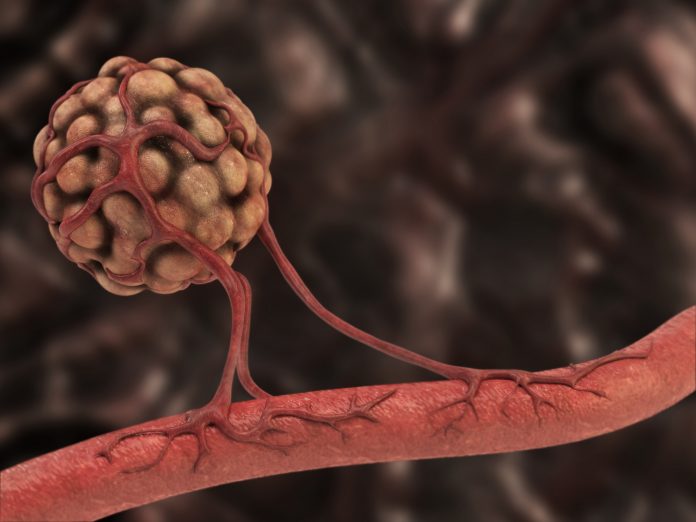
Blood vessels in tumor tissues are leakier than those in normal tissues. Researchers from the University of Michigan-Dearborn, Rensselaer Polytechnic Institute, and the University at Albany—SUNY explored whether the tumor cells can induce the weakening in the clockwise orientation of endothelial cells and cause them to disorganize in blood vessels. Their findings reveal direct contact between cancer and blood cells changes their normal clockwise orientation to a more metastasis-prone counterclockwise position.
The study is published in APL Bioengineering in an article titled, “Interacting with tumor cells weakens the intrinsic clockwise chirality of endothelial cells.”
The team of researchers developed a model that examines the local communication between endothelial cells and tumor cells and its effects on endothelial cell orientation.
“Endothelial cells (ECs) possess a strong intrinsic clockwise (CW, or rightward) chirality under normal conditions,” wrote the researchers. “Enervating this chirality of ECs significantly impairs the function of the endothelial barrier. Malignant tumor cells (TCs) undergo metastasis by playing upon the abnormal leakage of blood vessels. However, the impact of TCs on EC chirality is still poorly understood. Using a transwell model, we co-cultured the human umbilical vein endothelial cells or human lung microvascular endothelial cells and breast epithelial tumor cell lines to simulate the TC–EC interaction.”
“We believe the strong clockwise chirality of endothelial cells is important to maintain blood vessel integrity, but unfortunately, it could be damaged/weakened by tumor cells, which may increase the risk of metastasis,” explained Jie Fan, MD, PhD, author of the study and assistant professor of biology at the University of Michigan-Dearborn. “Preserving the normal chirality could inhibit tumor transmigration by reinforcing the chirality and the integrity of the endothelial barrier of blood vessels.”
The group co-cultured human umbilical vein endothelial cells (hUVECs) with a series of tumor cell lines with varying degrees of malignancy. They then compared how hUVECs responded when the tumor cells were directly touching them versus not.
They found the clockwise chirality of the hUVECs was less affected by local hormone signaling and more so by direct physical contact with tumor cells. Specific proteins on the tumor cell binding to others on endothelial cells appeared to play a role in changing the clockwise chirality of hUVECs.
“We had expected the tumor cell would invade the endothelial cell,” Fan said. “However, we found the endothelial cells were moving towards the tumor cell on the micropattern.”
Fan said regulating this interaction holds promise for better controlling cancer metastasis and he hopes to work further on developing therapeutics toward this end.













